
How to Use UPS BATTERY: Examples, Pinouts, and Specs
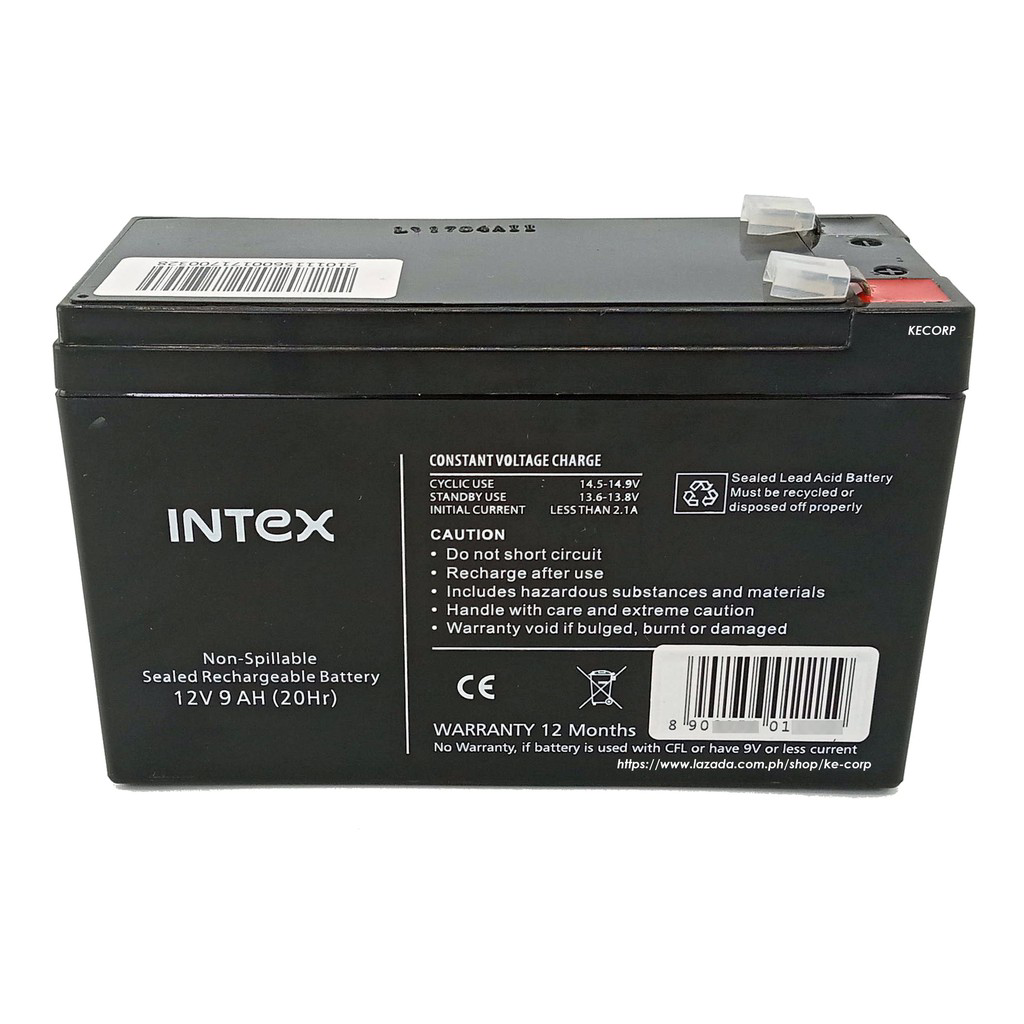
 Design with UPS BATTERY in Cirkit Designer
Design with UPS BATTERY in Cirkit DesignerIntroduction
A UPS (Uninterruptible Power Supply) battery is an essential component in power backup systems. It is designed to provide emergency power to a load, typically critical electronic equipment, when the input power source, usually the mains power, fails. UPS batteries are widely used in various settings, including data centers, hospitals, telecommunications, and residential applications, ensuring continuity of operation and protection against data loss or hardware damage due to power disruptions.
Explore Projects Built with UPS BATTERY
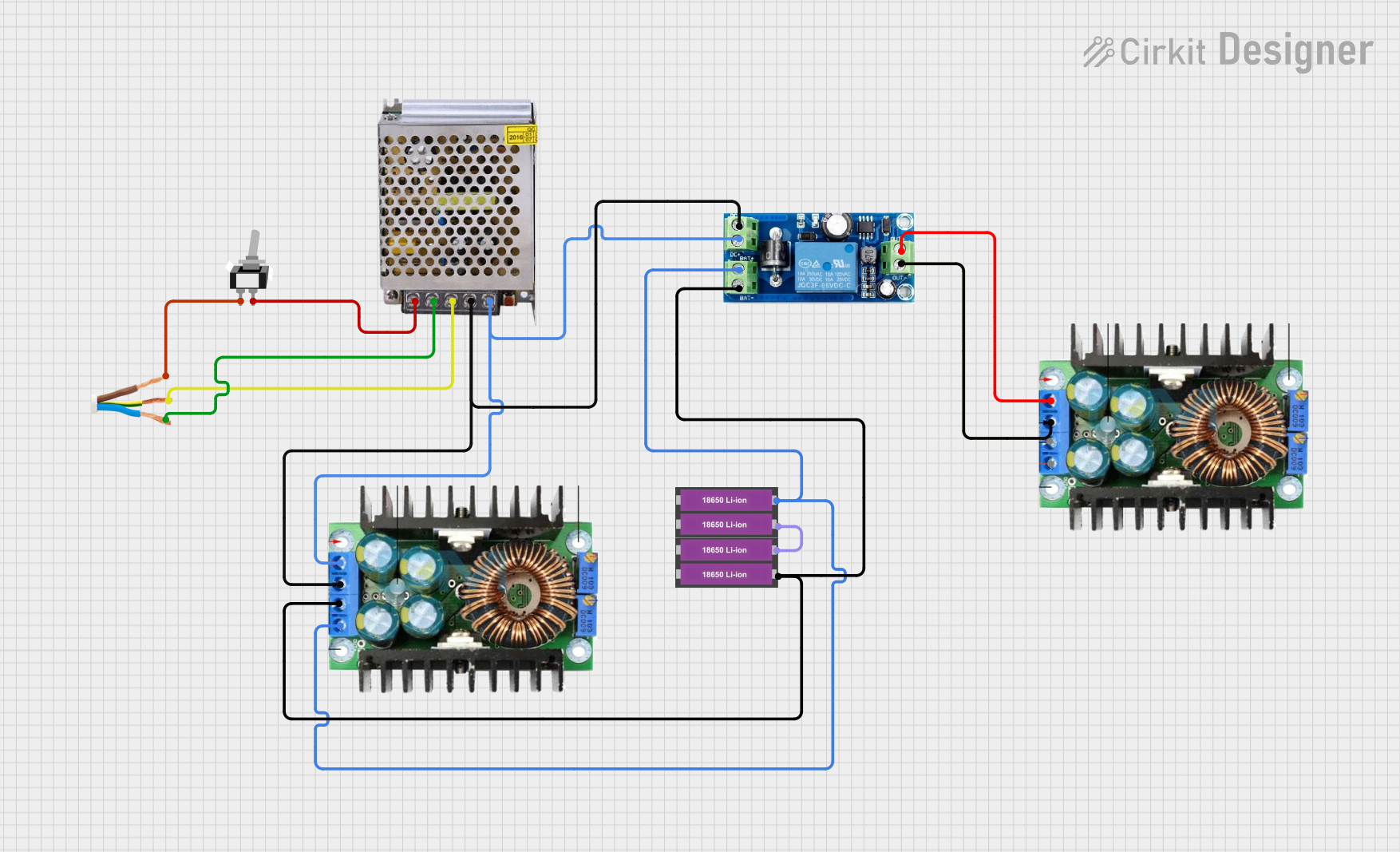
 Open Project in Cirkit Designer
Open Project in Cirkit Designer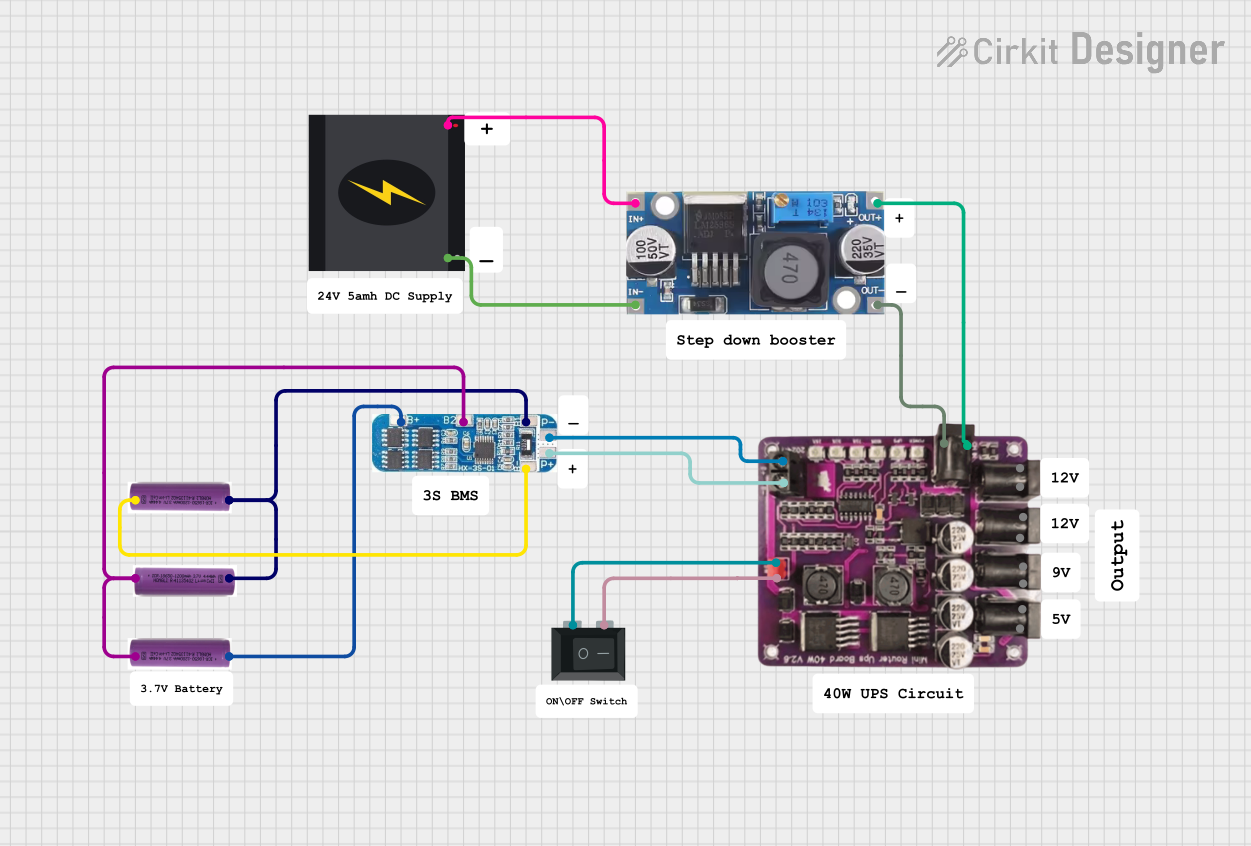
 Open Project in Cirkit Designer
Open Project in Cirkit Designer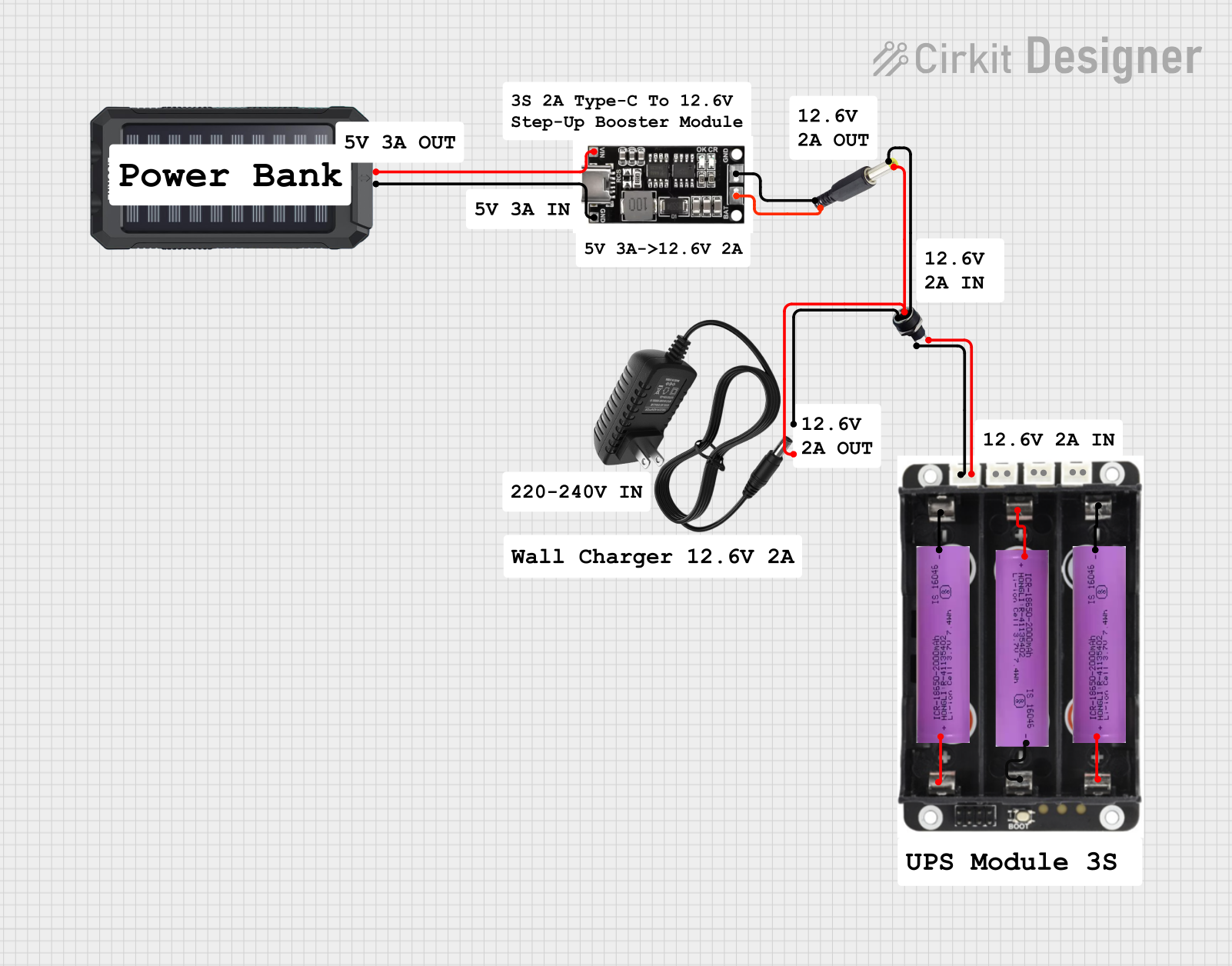
 Open Project in Cirkit Designer
Open Project in Cirkit Designer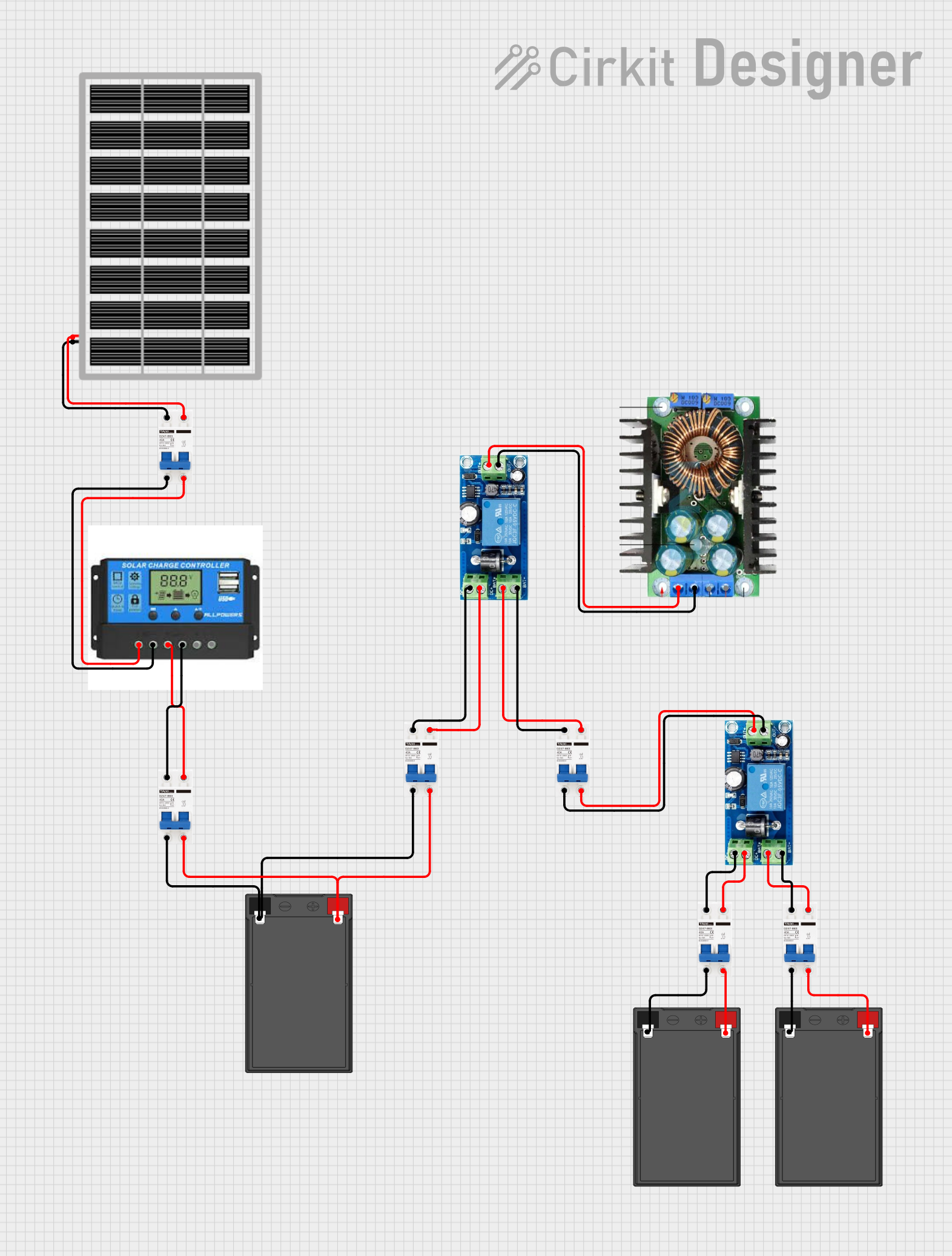
 Open Project in Cirkit Designer
Open Project in Cirkit DesignerExplore Projects Built with UPS BATTERY

 Open Project in Cirkit Designer
Open Project in Cirkit Designer
 Open Project in Cirkit Designer
Open Project in Cirkit Designer
 Open Project in Cirkit Designer
Open Project in Cirkit Designer
 Open Project in Cirkit Designer
Open Project in Cirkit DesignerTechnical Specifications
General Characteristics
- Battery Type: Sealed Lead Acid (SLA)/Lithium-ion (Li-ion)/Nickel-Cadmium (NiCd)/Nickel-Metal Hydride (NiMH)
- Nominal Voltage: 12V/24V/48V (varies by model and application)
- Capacity: Rated in ampere-hours (Ah), commonly ranging from 7Ah to 200Ah
- Design Life: 3-5 years for SLA, up to 10 years for Li-ion (varies by usage and environment)
- Operating Temperature Range: Typically 0°C to 40°C
Electrical Characteristics
- Charge Voltage: Varies by battery chemistry and manufacturer's specifications
- Maximum Charging Current: Depends on battery capacity and manufacturer's recommendations
- Discharge Cut-off Voltage: Determined by the UPS system to prevent deep discharge
- Energy Density: Higher for Li-ion compared to SLA
Pin Configuration and Descriptions
| Pin No. | Description | Note |
|---|---|---|
| 1 | Positive Terminal | Connect to the positive of the load/UPS |
| 2 | Negative Terminal | Connect to the negative of the load/UPS |
Note: UPS batteries typically have two terminals, positive and negative. Some models may include additional terminals for temperature sensing or battery management systems.
Usage Instructions
Installation
- Safety First: Always wear protective gear and follow the manufacturer's safety instructions.
- Orientation: Install the battery in the correct orientation as indicated by the '+' and '-' symbols.
- Connection: Use appropriate gauge wires and connectors to ensure a secure and low-resistance connection.
- Charging: Before first use, charge the battery according to the manufacturer's instructions.
Integration with UPS
- Compatibility: Ensure the battery voltage and capacity match the UPS system requirements.
- Wiring: Connect the battery terminals to the corresponding UPS terminals, observing proper polarity.
- Configuration: Set up the UPS system settings to match the battery type and capacity for optimal charging and discharging.
Best Practices
- Maintenance: Regularly check the battery voltage and physical condition.
- Storage: Store in a cool, dry place and periodically charge if not in use for extended periods.
- Recycling: Dispose of batteries according to local regulations and recycle when possible.
Troubleshooting and FAQs
Common Issues
- UPS not providing backup power: Check battery connections, charge level, and health.
- Battery not charging: Ensure the UPS charging system is functioning and the battery is not at the end of its life.
- Reduced backup time: This may indicate battery aging or a higher load than the battery is rated for.
FAQs
Q: How often should I replace my UPS battery? A: The replacement period varies by battery type and usage but typically ranges from 3 to 5 years.
Q: Can I increase my UPS backup time? A: Yes, by using a battery with a higher capacity or adding additional batteries in parallel, if supported by the UPS.
Q: Is it safe to replace the UPS battery myself? A: Yes, if you follow the manufacturer's instructions and safety precautions. If unsure, seek professional assistance.
Example Code for Arduino UPS Monitoring
// This example assumes the use of an Arduino UNO to monitor a UPS battery voltage.
const int batteryPin = A0; // Analog pin connected to battery voltage divider
void setup() {
Serial.begin(9600);
}
void loop() {
int sensorValue = analogRead(batteryPin); // Read the analog value
float voltage = sensorValue * (5.0 / 1023.0) * (11.0); // Convert to voltage
Serial.print("Battery Voltage: ");
Serial.println(voltage);
delay(1000); // Wait for 1 second before the next read
}
Note: The voltage divider factor (11.0) in the code should be adjusted based on the actual resistors used in the voltage divider circuit connected to the battery.
Remember to never exceed the voltage rating of the Arduino analog input pins (5V for Arduino UNO). Always use a voltage divider or level shifter when necessary.
This documentation provides a comprehensive guide to understanding, using, and maintaining a UPS battery. For further assistance, consult the manufacturer's datasheet and user manual.